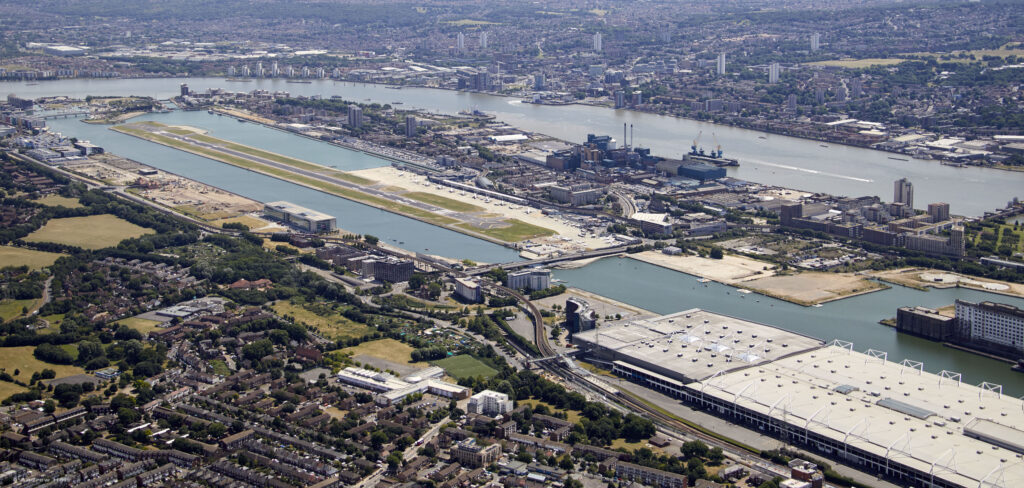London City Airport in the UK is undertaking a 10-week consultation on some changes to its existing planning permission and how it can meet passenger demand in the decade ahead.
The airport’s research has suggested it will surpass its current planning cap of 6.5 million passengers a year by 2025. Following the publication of the airport’s plan in 2020, the airport has invited views on additional flexibility to operate on Saturday afternoons and evenings, as well as additional flexibility in the first and last half hour of daily operations (6:30am-7:00am and 10:00pm-10:30pm). The 10-week consultation includes seven public events across East London between July 12 and July 21 as well as pop-up events through August. For people unable to attend any of the events, all of the consultation materials can be viewed on the airport’s online consultation portal.
The plans come with a commitment from the airport that only cleaner, quieter, new-generation aircraft, such as the Airbus A220 and Embraer E2, will be allowed to fly during the new operating periods. This is expected to bring forward the delivery of more of these aircraft and provide better connections to new destinations. The consultation also details how the current eight-hour night-time curfew will remain – as will the current operating hours on Sunday, with no flights being permitted until early afternoon (12:30pm). No increase to the current annual limit on flights has been proposed by the airport. To meet its target of achieving 80% of journeys to and from the airport undertaken via sustainable transport modes, no additional car parking has been proposed either.
The proposed changes are intended to create additional choices with connections to new destinations and deliver an additional 2,100 jobs, including 1,250 good-quality, London Living Wage jobs directly from the airport’s operation, with a further 850 jobs created across London through its supply chain. The airport also intends to share the benefits with the local community through an improved Community Fund.
Robert Sinclair, CEO of London City Airport, said, “London City Airport plays an incredibly important role in quickly and easily connecting London to the rest of the UK and the world for both business and leisure travel. The strength of our rebound demonstrates the huge pent-up demand for air travel and the need to plan responsibly for the future. Most importantly, following our commitment to be the first net-zero airport in London by 2030, these proposals set out how London City and its airlines can meet future demand in a sustainable way. In particular, it will accelerate investment in cleaner, quieter, new-generation aircraft for use in the extended periods, delivering the benefit of quieter aircraft to our local community throughout the whole week. During the 10-week consultation, we want to hear from everybody so that we have the most informed plans for the future as possible.”
Tom Stoddart, CEO of airline British Airways CityFlyer, said, “We welcome these proposals, which will provide more choice and flexibility for our customers, increase local jobs and help to drive London’s economic recovery. At British Airways, we remain focused on a sustainable future and these proposals put sustainability at the forefront of change at London City. At British Airways we have a clear roadmap to get us to net zero emissions by 2050, including flying more fuel-efficient aircraft, progressively introducing sustainable aviation fuel and looking at how we can help accelerate the growth of new technologies, such as zero-emissions hydrogen-powered aircraft.”
Warner Rootliep, managing director of airline KLM Cityhopper, said, “London City is a key airport in our UK network, providing fast and convenient connections to and from the rest of the world via KLM’s hub at Amsterdam Schiphol Airport. KLM has recently acquired a fleet of new-generation Embraer E195-E2 aircraft, which is ideally suited to airports like London City, and more operational flexibility will help us grow this vital route using our new aircraft, reducing noise and emissions. We look forward to reviewing the proposals in detail.”

